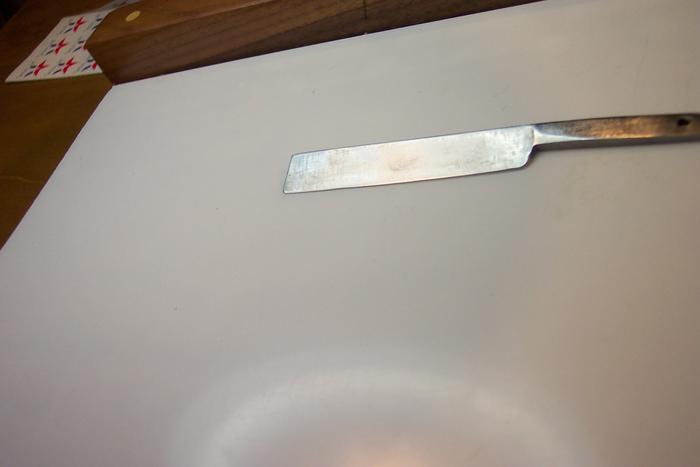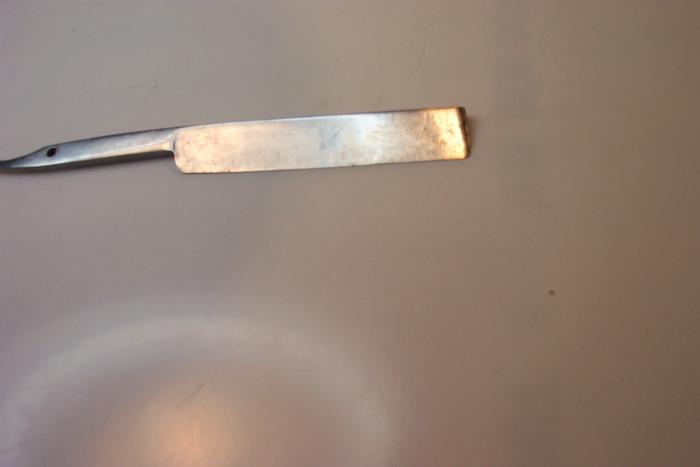Results 1 to 10 of 16
Hybrid View
-
05-27-2014, 05:11 AM #1

I've also been using WD 40 with wet/dry. I'm not sure exactly why it seems to work better. Moves more easily, faster, and it makes a sort of paste, almost like slurry. Seems better than scraping dry grit across the blade.
This time around, not having a wine cork handy, I used a big rubber eraser as backing for the sandpaper. That worked well.
Joe
-
05-27-2014, 07:10 AM #2

Sorry all hand sanding here
I go to 5000 grit wet & dry then autosol
I have also used the dremel felt buff a couple of times but only with the autosol usually for pits etc
But not keen real yet with itSaved,
to shave another day.
-
05-27-2014, 10:24 AM #3

The scratches you see may be left overs from previous grits that where never quite removed. If I'm not very thorough, I find they can show up two grits further up the scale, coming into focus when the background "noise" of scratches is reduced by the finer grits.
Than ≠ Then
Shave like a BOSS
-
05-27-2014, 02:52 PM #4

Here's what it looks like now, after 3000 grit wet and dry, and Maas:


I haven't yet gotten the hang of the Dremel sanding or buffing. The sanding drums leave waves of depressions in the metal, and the felt buffers with Dico compound leave rough scuff marks. I must be doing something wrong. I Don't know what it is.
************************************************** **************************************************
Below, I'll put in three picture of a blade with the waves of depressions left by the sanding drums (240 grit). This is the first blade I started restoring, a few days ago. It is a 5/8 W&B wedge. It had a bad chip and deep pitting. I wasn't sure it was salvageable. I started with it because I thought it potentially the least valuable of my razors, and I wanted to make the worst first learning mistakes on a less valuable blade. I progressed with it only as far as these photos show when the mailman delivered the F. R. Reynolds pictured at the top of this post.
The first picture shows the waves of depressions near the spine on the half of the blade toward the heel:

The second picture shows the waves of depressions near the spine close to the toe:

The third picture shows the waves of depressions on the reverse side of the blade, near the spine close to the toe:

Do other restorers ever use sanding drums with a Dremel? Is there a good way to do it? For now, I'm just avoiding the sanding drums, going with hand sanding instead--as I did with that F. R. Reynolds at the top of this post.
The little W&B wedge will be very small indeed by the time I finish with it. I imagine it will be usable for shaving, though.
Joe


 8Likes
8Likes LinkBack URL
LinkBack URL About LinkBacks
About LinkBacks







 Reply With Quote
Reply With Quote
